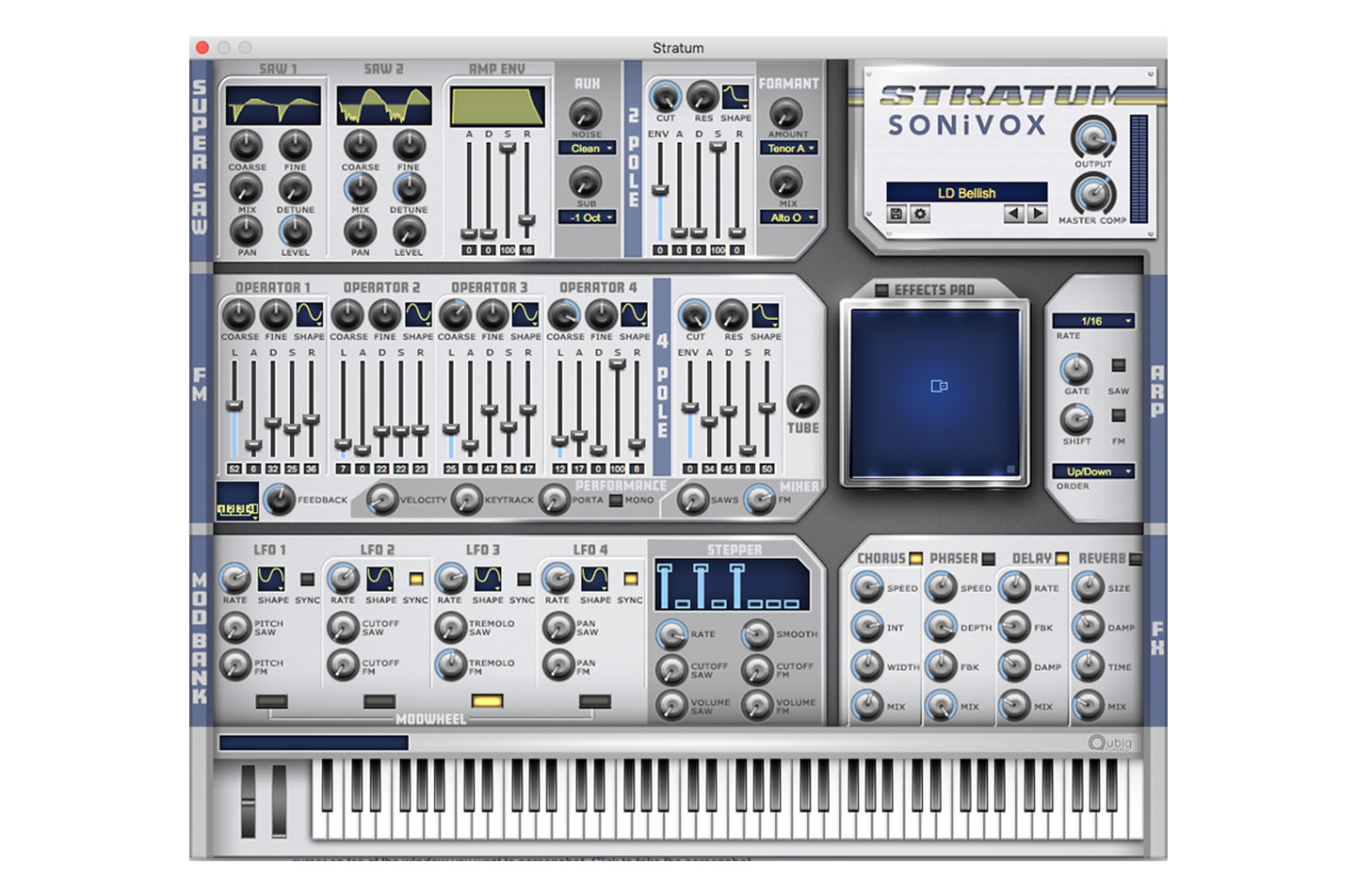- Instant trance with JP-8000-style supersaws.
- SONiVOX's latest offering, the Stratum Transwave Synthesizer, promises to provide a fast-track to retro-futuristic soundscapes. The core sound generator is comprised of two sections—a dual-oscillator, JP-8000-inspired super saw and a four-operator FM synth. According to the official description, "these timbres are gaining popularity fast," which might seem like an odd thing to say about 20-year-old, classic sounds. However, the likes of Lorenzo Senni and other trance revivalists have made new use of these harmonically-rich tones. Super saws stacked on an FM synth might seem like an odd pairing, but Stratum aims to make it a useful and natural combination.
Each saw oscillator features coarse- and fine-tuning, a mix control that sweeps from a basic saw to the seven-saw waveform, and a detune knob that alters the harmonic balance between the waves. Each of the two oscillators' panning and levels can also be set individually, but they share a single amplitude envelope. At this stage, they can be joined by a noise generator, switchable between clean, glitchy and dirty flavours, and a sub-oscillator that ranges from zero to minus three octaves. This is followed by a multimode two-pole filter with its own envelope generator and an additional formant filter, mixable between any two formants. The formant filter is a nice idea, but the implementation here is more subtle than mind-blowing.
The FM section is standard four-operator fare, though admirably easy to use. Like the super saw section, each operator has coarse- and fine-tuning as well as a waveform selector with some interesting options, as well as a separate ADSR envelope and level control. Eight algorithms are available as well as a master feedback control, then the FM voice is passed through a four-pole filter of its own, this time with the addition of tube emulation.
Stratum's effects and modulation features take it from a slightly quirky but straightforward synth to a more interesting sonic tool. Most immediately noticeable is the built-in arpeggiator, which can toggle between either the saw section, the FM voice, both, or neither. For example, this facilitates simultaneous generation of coordinated pads and basslines, although it can be pushed into the realm of strange, complex note and beat effects.
The Mod Bank section of Stratum adds four sync-able, multi-waveform LFOs, each of which's effect depth can be mapped to modwheel control. Rather than opting for a matrix approach, each LFO is hardwired to a different set of parameters. This does limit the modulation capabilities somewhat, but the parameters seem thoughtfully chosen and the system works well. In addition to the LFOs, an eight-part sequencer called Stepper allows for further modulation of filter cutoffs and part volume.
Stratum is rounded off with a small FX section, with chorus, phaser, delay and reverb. Each effect can be separately activated but they are applied to the entire mix, rather than to one synth or the other. The effects on their own are nothing special, but they do the job. They're complimented by an XY effects pad, which was much more troubling for me. The pad's parameters cannot be set, nor is there any indication of what they are. Stratum's press release states that the pad mixes in "Bit Crusher, Dirty Phaser, Wah Wah and Non-Linear Delay" effects, but seeing as this is isn't indicated anywhere in the plug-in itself, the effects pad isn't very practical or helpful for anyone who prefers to be in full control of synth programming.
Overall, Stratum serves its stated purpose as a retro sound-maker. The expansive preset bank is well-rounded, if somewhat cheesy, and serves as a good jumping-off point for further programming. However, I was surprised not to find an empty preset or a way to reset to a default state for patching from scratch. The GUI is also riddled with odd design choices, from the overall look (very '90s chic) to the tiny text. Despite its novel structure, Stratum isn't quite a must-have device and at €150, it's not a steal either. But if you're looking to quickly add more of a trancey, '80s sound palette to a track, it's not a bad choice.
Ratings:
Cost: 3.5
Versatility: 3.9
Ease of use: 4.1
Sound: 4.0
